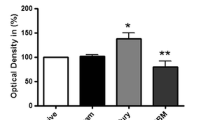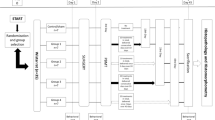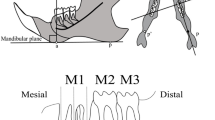Abstract
. Previous studies have suggested that low level laser (LLL) treatment at specific wavelengths can enhance motor and sensory function in peripheral nerves after injury. The dental pulp is innervated by unmyelinated C fibres and small myelinated Aδ fibres derived from the trigeminal ganglion, both of which are known to contain calcitonin gene related peptide (CGRP).
The aim of the present study was to examine the effects of daily LLL treatment on the sensory reinnervation of the first molar pulp 10 days subsequent to inferior alveolar nerve (IAN) axotomy, by counting the number of nerve fibre profiles immunoreactive to CGRP in rats.
Axotomy of the IAN was performed via an extraoral buccal incision. The animals (n=11) were divided into two groups receiving either daily LLL treatment with a GaAlAs laser (λ=830 nm), or sham laser treatment over the site of injury for 10 days postoperatively. The animals were transcardially perfused and fixed at death before excising the jaws for further fixation and demineralisation. The jaws were cryosectioned obliquely through the mesial root pulp of the first molar tooth, which was the chosen level for evaluation of reinnervation. The CGRP antigen–antibody binding sites were visualised using a standard avidin biotin peroxidase technique. Both sham and LLL treatment and the evaluation of results were conducted blind. The results were statistically analysed and presented as median with 25%–75% quartiles.
A statistically significant (p≤0.0000) greater number of CGRP immunoreactive nerve profiles were seen in the LLL-treated group (median=5, range 4–6) compared to the sham laser treated group (median=2, range 1–3), at the specified area for evaluation.
These results suggest that LLL treatment can enhance reinnervation of denervated dental tissues after IAN axotomy in the rat. The enhanced reinnervation could be due to accelerated regeneration of the axotomised nerve, to collateral reinnervation, or a combination of both these nerve responses. The mechanisms whereby these changes are effected are still unknown.
Similar content being viewed by others
Author information
Authors and Affiliations
Additional information
Paper received 15 October 1997; accepted following revision 25 November 1998.
Rights and permissions
About this article
Cite this article
Khullar, S., Brodin, P., Fristad, I. et al. Enhanced Sensory Reinnervation of Dental Target Tissues in Rats Following Low Level Laser (LLL) Irradiation. Lasers Med Sci 14, 177–184 (1999). https://doi.org/10.1007/s101030050082
Issue Date:
DOI: https://doi.org/10.1007/s101030050082




